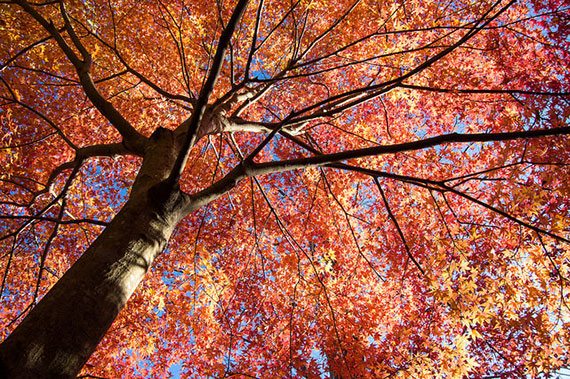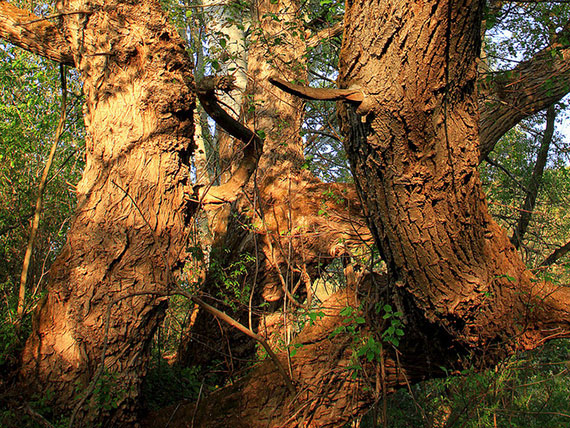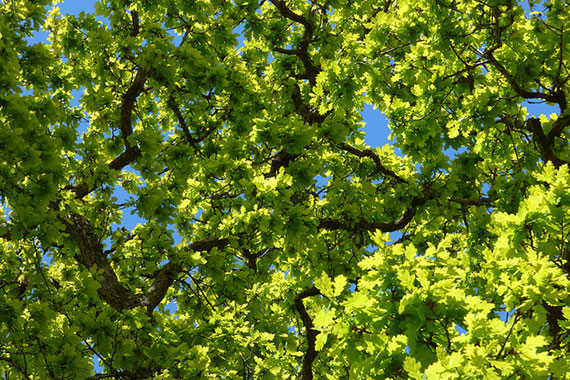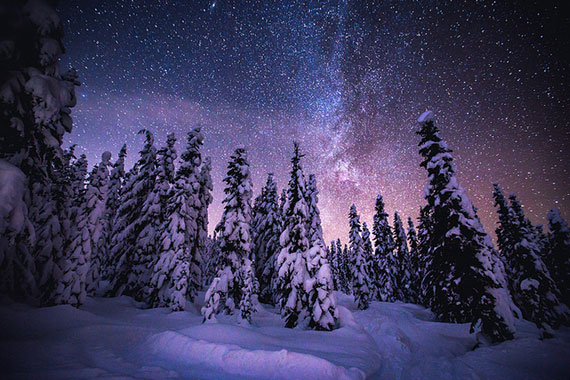Nature photography is a favorite genre of photography, and within nature photography, trees are one of the most common subjects. Trees are widespread, tremendously diverse, and can make both beautiful and majestic subjects.

Photo by peaceful-jp-scenery (busy); ISO 200, f/13.0, 1/50-second exposure.
In some respects, trees are also easy to photograph: they are widely visible and, unlike animals, they sit still, allowing you to carefully compose exactly the photo you wish to capture. The best way to get better at photographing trees is to get out there in the world, look at trees, and take lots of photos of trees.
However, there are a few tips and tricks that can help you to take beautiful photos of trees.
Experiment
The best way to get better at photographing trees is to take photographs of trees. However, getting creative with your composition, angle, and the aspect of the tree that you wish to focus on can help you to discover new ways to produce artistic or powerful photographs of trees. Pick a tree, any tree, and try photographing it in as many ways and from as many angles as possible. Focus on the leaves, the bark, the stems, the roots, the fruit or flowers, or the bare branches, depending on season. Compare the bark on the trunk to the bark on smaller branches, or the leaves low on the tree to the leaves higher to the top (if you have a way of getting close enough to photograph them).

Photo by Emilian Robert Vicol; ISO 125, f/11.0, 1/120-second exposure.
Try taking photos of the tree from a distance, as well as from within the tree, looking outward. Photograph the ground under the tree; look up through the tree to the sky. Photograph the miniature ecosystem created by the tree, the moss or lichen growing on the trunk or roots, the animals or other plants that make this tree their home, and the soil or ground in which the tree lives.
Return to each tree at different times of the day and year
Trees are remarkably dynamic. The color and appearance of deciduous trees changes sharply in the different seasons, as they sprout fresh leaves, as their leaves mature and turn darker green, and then as the leaves turn colors and drop in the fall. Evergreen trees have more subtle changes throughout the year, but they are dynamic as well.
Trees also look radically different at different times of day and in different lighting. Trees are light capturing machines, and accordingly, the visual effects as the sun shines on them from different angles throughout the day can be surprisingly complex and interesting.

Photo by Mark Coleman; ISO 100, f/5.2, 1/320-second exposure.
In some cases you may wish to photograph sunlight filtering through branches or interesting shadows cast by the sun, whereas at other times you may find that an overcast or even rainy day brings out color contrasts that were not evident on a clear day. Inclement weather such as floods, droughts, snow, and ice storms often produce new and beautiful scenes with trees that can be captured in photographs. Although a tree may stand in the same place for years, sometimes you may only have one opportunity to capture a unique occurrence in a photograph.
Know your trees
Botanical knowledge is not necessary, but it certainly can’t hurt. Some people look at a tree and see just a tree; others might see an oak, or further, specific species like a pin oak, northern red oak, or swamp white oak. Each different species has a particular appearance and growth habit. Knowing more about the biology and ecology of trees can guide and enrich your experience as a photographer in a number of ways.
As you get to know the various species of tree, you will know where to return to find beautiful fall colors, spring flowers, or interesting shapes of bare branches in winter, even when you visit at a different time of year when the scene may look more mundane. Knowledge of a tree’s ecology and biology, and your own skill at photographing that type of tree often go hand-in-hand. You will find that as you learn more about a tree, you become better capturing interesting aspects of it in pictures, and you will also find that the more you photograph a tree, the more curious you become about the tree itself and its relationships to other living beings.

Photo by Gerald Oskoboiny; ISO 2500, f/2.8, 30-second exposure.
Summary
Reading about how to photograph trees can only get you so far. Turn off your computer, get outside, and take some pictures. You do not need to do anything fancy; start with the first tree you find!
About the Author:
Alex Zorach takes photographs of trees both to capture their natural beauty and to illustrate ecological concepts and environmental issues. He publishes photos as well as writings on politics, religion, and a variety of other subjects on Cazort.net, his personal and opinion website. If you are interested in tree photography, you are likely to enjoy his collection of pictures of trees, as well as his photographs of a wide variety of other subjects.
Like This Article?
Don't Miss The Next One!
Join over 100,000 photographers of all experience levels who receive our free photography tips and articles to stay current:






Alex,
I find your article interesting, informative, and challenging. I’ve taken pictures for years; many people like them, but they are friends, and you can’t count on them to say much of anything different. I’ve made good compositions of landscapes in the past (my opinion), but I know that I didn’t exhaust the possible views. Reading your article about the various angles for shots of a single tree excites me. I understand the concept of practice makes perfect–or some facsimile of that concept–but this article expands my thinking exponentially. I will work on tree pictures, as your feature suggests, to open my mind, and expand my views of nature. Thank you for the information.
By the way, I looked at your website, and was impressed with the breadth of your subject matter. Everyone that wants to learn new things, and expand their minds, should take a look.
Hi,
I’m an amateur photographer. Thank you for the tips. I always find it difficult to get that perfect shot of landscapes. Your tips are something to think about and try out. thanks again. I’ll be back for more tips. :)